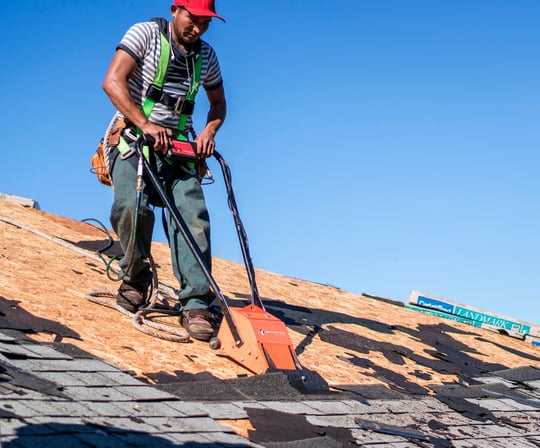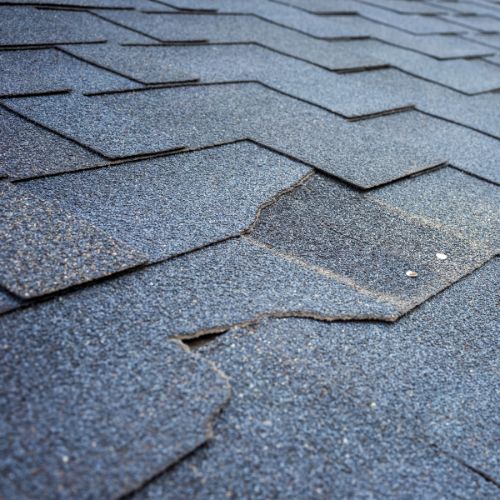Roofing Quality by Keep Dry Roofing LLC: Reliable and Inexpensive Services
Ultimate List for Examining the Problem of Your Roof System and Identifying Prospective Problems
Checking the problem of your roof is a prudent method for any house owner aiming to guard their building financial investment (Keep Dry Roofing LLC). Normal evaluations can expose prospective problems before they escalate into pricey fixings or substitutes. By complying with an extensive list customized to assess the various parts of your roof covering, you can get valuable understandings right into its present state and preempt any upcoming issues. This positive approach not only makes sure the long life of your roofing system yet also adds to keeping the architectural integrity of your home.

Roof Covering Inspection Tools
These tools help in finding potential concerns, evaluating the general condition of the roof covering, and identifying the essential maintenance or fixings needed. One of the key tools used in roofing inspections is a wetness meter, which helps determine locations of trapped dampness within the roofing system layers that might indicate leaks or water damages.

Additionally, an electronic camera or smart device is vital for documenting the assessment procedure, capturing pictures of any kind of damage or areas of worry for additional analysis. Various other devices such as field glasses, roof probes, and security tools like ladders and harnesses are crucial for a extensive and risk-free roofing system inspection. By using these tools efficiently, examiners can conduct extensive evaluations, identify issues quickly, and suggest suitable services to maintain the roof's honesty.
Outside Roofing Assessment
To completely examine the condition of a roofing system, an exterior roof analysis is vital to check the surface for signs of wear, damage, or potential concerns. Throughout an exterior roof analysis, it is vital to begin by checking out the roof shingles or roofing product. Try to find any missing out on, split, or curled shingles as they can show water penetration and potential leakages. Look for moss or algae development, which can trap dampness and trigger wear and tear in time. In addition, examine the blinking around chimneys, vents, and skylights to guarantee they are secure and in excellent condition to avoid water infiltration.

Analyze the general sanitation of the roofing, as debris build-up can keep dampness and speed up roof covering damage. By carrying out a comprehensive outside roofing system analysis, property owners can recognize and deal with possible concerns before they escalate into pricey repair work.
Interior Ceiling Evaluation
Upon getting in the interior area, a comprehensive analysis of the redirected here ceiling is necessary to identify any type of indicators of water damages, leaks, or structural concerns. Begin by aesthetically inspecting the ceiling for any type of staining, drooping, or peeling off paint, as these can indicate water seepage from the roof. Try to find water discolorations or mold growth, which are clear signs of a leakage. Pay close focus to any areas where the ceiling meets the wall surfaces or where lighting fixtures are mounted, as these prevail areas for water breach. In addition, look for any signs of sagging or unevenness in the ceiling, which might recommend architectural troubles that require prompt focus. Make use of a flashlight to examine hard-to-reach edges and crevices completely. Any type of mildewy smells or wetness airborne must also increase concerns concerning prospective roof covering problems. Taking the time to examine the interior ceiling can assist find roof troubles at an early stage and protect against further damage to the building.
Attic Examination
The attic offers as a vital element of the roof system, offering insights into prospective concerns that may not be noticeable from the outside or inside of the home. During the attic examination, it is important to inspect for indications of water damage, such as water stains, mold and mildew development, or decomposing wood, which could indicate a leakage in the roof. Routinely assessing the attic room can aid determine potential roof covering issues early on, enabling for prompt fixings and upkeep to prolong the life-span of the roofing.
Resolving Typical Roofing System Troubles
One of the most regular concerns homeowners encounter is a leaking roof, commonly created by damaged or missing shingles, improper see this here setup, or scrubby flashing. One more usual issue is roof covering air flow concerns, which can lead to excess warm and dampness build-up in the attic room, triggering early damage of the roof materials. Additionally, the accumulation of particles such as leaves, branches, or snow on the roof can block drain systems and lead to water merging, which might at some point create roof leaks or structural damages.
Verdict
In verdict, an extensive examination of your roofing system is important to determine potential problems and guarantee the overall problem of your roofing. By utilizing the proper tools and carrying out interior, attic room, and exterior evaluations, usual roof covering problems can be resolved quickly. Normal upkeep and timely repair services can assist protect against substantial damages and extend the life-span of your roofing system.
One of the primary devices utilized in roof assessments is a moisture meter, which helps identify areas of entraped wetness within the roofing system layers that can indicate leakages or water damage. Other tools such as binoculars, roof covering probes, and security equipment like ladders and harnesses are vital for a secure and extensive roof assessment.To completely evaluate the condition of a roof covering system, an outside roof covering examination is essential to check the visite site surface area for indicators of wear, damages, or potential issues. Analyze the total tidiness of the roofing system, as debris buildup can retain wetness and speed up roof covering damage. Keep Dry Roofing LLC. Furthermore, the buildup of debris such as fallen leaves, branches, or snow on the roof covering can obstruct drain systems and lead to water pooling, which may at some point create roof leaks or architectural damage